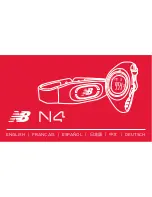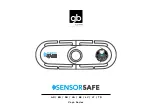
Page 17
For a command:
*
<a>
*:
<cmd>
;
<params>
¿
!
<a>
!
<response>
!
¿
For a query:
*
<a>
*:
<cmd>
;
<params>
¿
<data>
¿
!
<a>
!
<response>
!
¿
where:
<a> is the address letter
<cmd> is the command/query (query identified by a ‘?’ after the three chars)
<params> is the comma separated parameter list, if any
<response> is the acceptance indicator.
<data> is the data requested if a query was sent. Note the data usually
consists of some identification string, in CAPS, followed by a colon (:) and then the actual
data. Some queries return multiple lines of information. See individual commands for
details as appropriate.
The acceptance indicator is a single character as follows:
·
‘o’ = OK: if the command/query was recognised and accepted;
·
‘b’ = BADCMD: if the command/query was not recognised or has incorrect/invalid
parameters
·
‘e’ = ERROR: if there was some internal comms error.
·
‘w’ = BUSY: if the comms is currently busy.
6.3
Main commands
(a)
Output current readings – ‘r’
This command tells the CCD to get the current reading of the input channel data and
output to the comms. If the input voltage of the channel is more than 15% over the full
scale voltage set for the channel, the <reading> below will be replaced with the over
range error – “
RANGE!
”.
The readings output format is as follows with the channel data followed by a setpoint mode
indication, separated by a semi-colon:
READ:
<reading>
;
<setpoint mode>
¿
The <setpoint mode> is a single number that represents the current mode of the setpoint:
0 = Auto, 1 = Open, 2 = Closed. This number is mainly included for use with Chell’s front-
end software (DisplayX) and is mainly useful when outputting repeated readings, where it
effectively provides a constant update of the current mode of the setpoint.














































